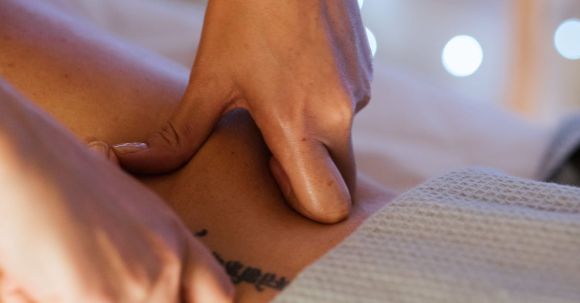Muscle tension and soreness can be a common issue for many people, whether it’s from physical activity, stress, or even just poor posture. The good news is, there are several effective ways to relieve muscle tension and soreness. In this article, we will explore some helpful tips that can help you find relief and get back to feeling your best.
Stretching and Flexibility Exercises
One of the most effective ways to relieve muscle tension and soreness is through stretching and flexibility exercises. Stretching helps to improve blood flow to the muscles, which can help reduce tension and promote relaxation. It is important to stretch properly and avoid bouncing or overstretching, as this can lead to injury. Instead, focus on gentle, slow stretches and hold each stretch for at least 30 seconds.
Massage and Foam Rolling
Massage therapy is another great option for relieving muscle tension and soreness. A professional massage can help relax tight muscles and improve circulation, promoting healing and reducing pain. If you don’t have access to a massage therapist, foam rolling can be a helpful alternative. Foam rolling involves using a foam roller to apply pressure to specific areas of tension or soreness. This can help break up knots in the muscles and improve flexibility.
Heat and Cold Therapy
Heat and cold therapy can also be effective in relieving muscle tension and soreness. Applying heat to tense muscles can help increase blood flow and relax the muscles. You can use a heating pad, warm towel, or take a warm bath or shower to help relieve muscle tension. On the other hand, cold therapy can help reduce inflammation and numb the area, providing temporary relief from soreness. You can apply an ice pack or a bag of frozen vegetables to the affected area for about 15-20 minutes.
Proper Posture and Ergonomics
Poor posture and ergonomics can contribute to muscle tension and soreness. Sitting or standing in a slouched position for long periods of time can put strain on the muscles and lead to discomfort. It is important to maintain proper posture and ergonomics throughout the day. Make sure your workspace is set up correctly, with your chair at the right height and your computer monitor at eye level. Take frequent breaks to stretch and change positions to avoid muscle tension and soreness.
Stay Hydrated and Eat a Balanced Diet
Staying hydrated and eating a balanced diet can also play a role in relieving muscle tension and soreness. Dehydration can lead to muscle cramps and tightness, so it is important to drink enough water throughout the day. Additionally, eating a diet rich in fruits, vegetables, and lean proteins can provide the necessary nutrients for proper muscle function and recovery.
Manage Stress
Stress can contribute to muscle tension and soreness. Finding healthy ways to manage stress can help reduce muscle tension and promote relaxation. Engaging in activities such as yoga, meditation, or deep breathing exercises can help calm the mind and relax the muscles. Additionally, getting enough sleep and practicing good sleep hygiene can also help reduce stress and promote muscle recovery.
Incorporating these tips into your daily routine can help relieve muscle tension and soreness, allowing you to move and function more comfortably. Remember to listen to your body and seek professional help if the pain or discomfort persists. By taking care of your muscles, you can improve your overall well-being and enjoy a pain-free, active lifestyle.





